Chapter: Operations Research: An Introduction : Network Models
CPM AND PERT: Critical Path (CPM) Computations
Critical Path (CPM) Computations
The end
result in CPM is the construction of the time schedule for the project (see
Figure 6.38). To achieve this objective conveniently, we carry out special
computations that produce the following information:
a.
Total duration needed to complete the project.
b.
Classification of the activities of the project as critical and noncritical.
An activity
is said to be critical if there is no "leeway" in determining its
start and finish times. A noncritical activity allows some scheduling slack, so
that the start time of the activity can be advanced or delayed within limits
without affecting the comple-tion date of the entire project.
To carry
out the necessary computations, we define an event as a point in time at which
activities are terminated and others are started. In terms of the network, an
event corresponds to a node. Define

The
definitions of the earliest and latest occurrences of event j are specified relative to the
start and completion dates of the entire project.
The
critical path calculations involve two passes: The forward pass detennines the earliest occurrence times of the events,
and the backward pass calculates their latest
occurrence times.
Forward
Pass (Earliest Occurrence limes, ð). The computations start at node
1 and advance recursively to end node n.
Initial Step. Set ð 1 = 0 to
indicate that the project starts at time O.
General Step j. Given that nodes p, q,…. , and v are linked directly to node j by
incoming activities (p, j), (q, j), , and (v, j) and that
the earliest occurrence times of events (nodes) p, q, ... , and v have already been computed, then the earliest occurrence time of
event j is computed as
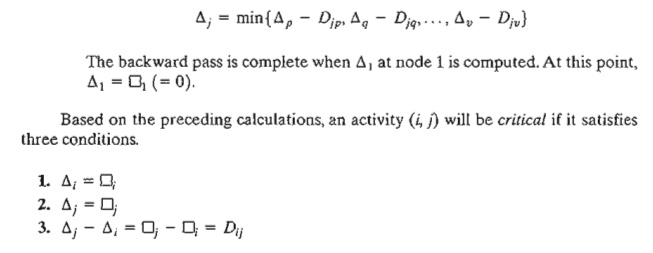
The three
conditions state that the earliest and latest occurrence times of end nodes i and j are equal and the duration Dij fits "tightly" in the specified
time span. An activity that does not satisfy all three conditions is thus noncritical.
By
definition, the critical activities of a network must constitute an
uninterrupted path that spans the entire network from start to finish.
Example
6.5-2
Determine
the critical path for the project network in Figure 6.42 . All the durations
are in days.
Forward
Pass
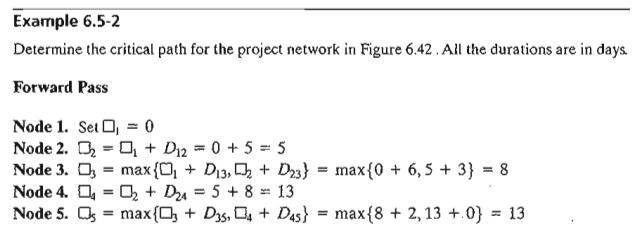
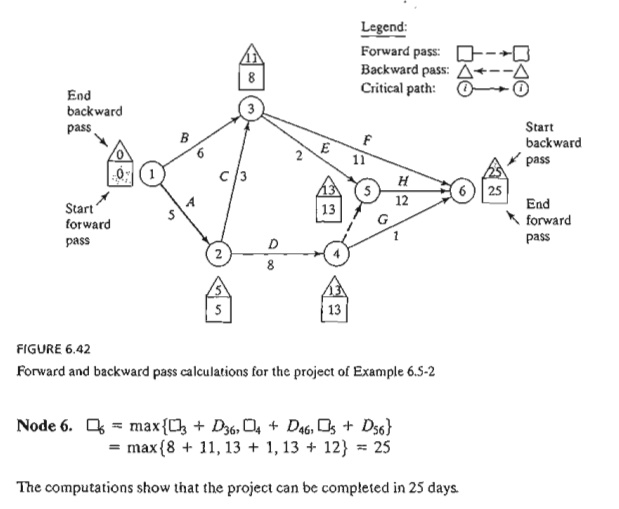
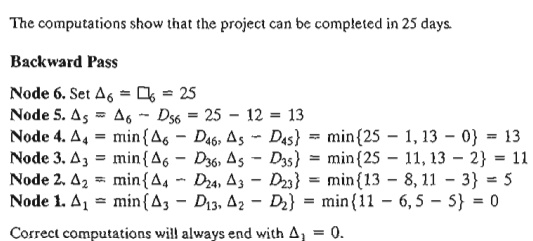
The
forward and backward pass computations can be made directly on the network as
shown in Figure 6.42. Applying the rules for determining the critical
activities, the critical path is 1 -> 2 -> 4 -> 5 -> 6,
which, as should be expected, spans the network from start (node 1) to finish
(node 6). The sum of the durations of the critical activities [(1,2), (2, 4),
(4, 5), and (5, 6)J equals the duration of the project (= 25 days). Observe
that activity (4,6) satisfies the first two conditions for a critical activity

Hence,
the activity is noncritical.
PROBLEM
SET 6.5B
*1. Determine the critical path for the project
network in Figure 6.43.
2.
Determine the critical path for the project networks in Figure 6.44.
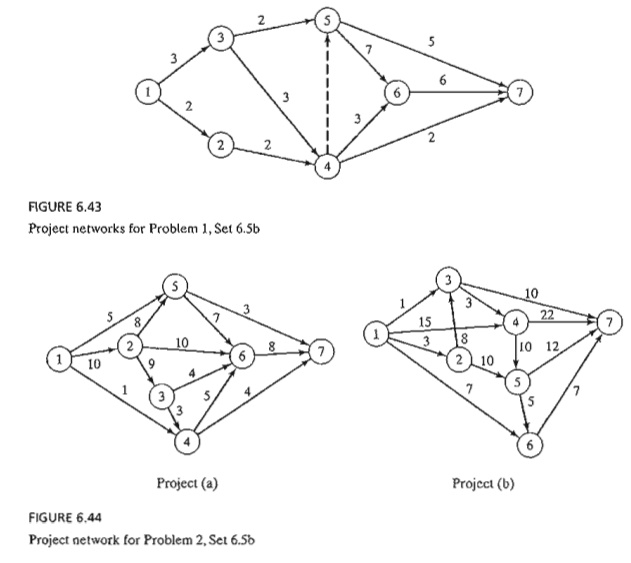
3.
Determine the critical path for the project in Problem 6, Set6.5a.
4.
Determine the critical path for the project in Problem 8, Set 6.5a.
5.
Determine the critical path for the project in Problem 9, Set 6.5a.
6. Determine
the critical path for the project in Problem 10, Set 6.5a.
Related Topics